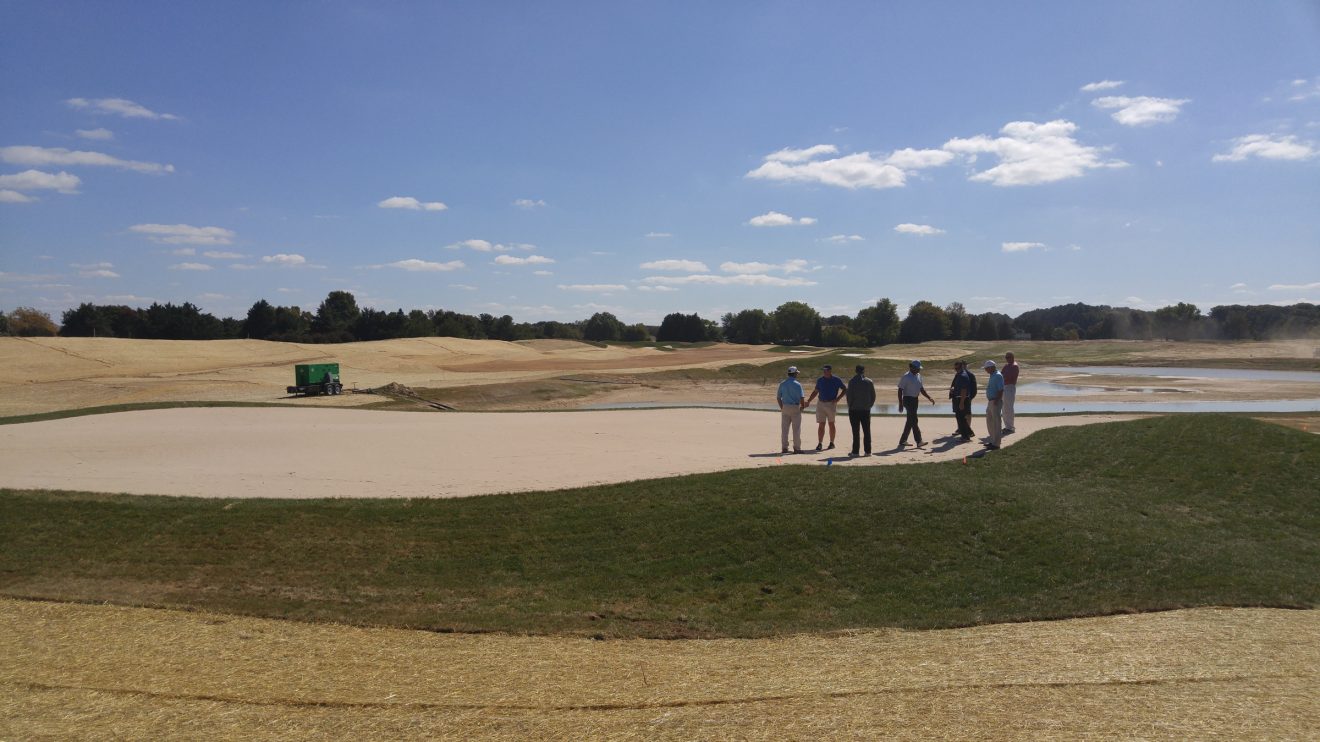ST. MICHAELS, Md. -- "Oh, I can't wait to see you try to hit that shot!"
The Links at Perry Cabin director of golf John Mlynarksi told me that at least a handful of times as our small posse of golf media and club staff took us on a tour of the in-progress Pete, Alice and P.B. Dye design still taking shape on Maryland's Eastern Shore.
The genuine excitement was written all over his face and was evident in his voice. He wasn't BS-ing me. He really was curious how I would try to tackle all of these shots he's been imagining in concept for months as workers lay the groundwork for a new course built over the bulldozed remains of the former Harbortowne Golf Links.
That course, curiously enough, was another Dye job, built by Pete's brother Andy. It had a lot of trademark Dye characteristics: railroad ties, target golf, tighter landing areas, overhanging trees. But it wasn't particularly inspiring, and in the early 2010s, it had fallen on hard times. It wasn't as well maintained as it once was, and the adjoining resort and conference center weren't seeing the same business it once did.
So, in 2015, after the resort had shuttered, Richard Cohen, who owns the nearby 200-year-old Inn at Perry Cabin, bought the property almost sight unseen. Cohen is a huge golfer, and he wanted to transform the property into both a showpiece for him and his buddies as well an amenity for the resort. Cohen brought in the Dyes to work on this property and reimagine the course with few restrictions -- either in terms of budget or design elements.
The Links at Perry Cabin will open in 2018, and it will quickly cement itself as the upscale private club of the Eastern Shore. Situated in a town best known for antiquing and a modest wine scene, the Links will be a second or third club for a lot of members, with initiation fees in the range of $25,000-$30,000. People who have their second, third, fourth -- who knows how high ordinally -- homes in the area will use the club. Some might play 10 rounds per year. Some might use it all summer long, a respite from blaring hot temperatures in warmer climates. And interspersed will be a number of resort guests, who will be whisked from the modern-post-Revolution trappings of the gorgeous inn to a property which will barely resemble its former self.
As part of the project, the former on-property accommodations will be reimagined, upgraded from their modest original state to more upscale rooms and cottages for members and guests alike. The quiet setting along a private-feeling portion of the Chesapeake Bay will be an outstanding spot for a buddies' trip to get away from it all.
The course itself is a fascinating mix, blending signature Dye components and a few Cohen requests into a trip that begins amid a few modest homes and crescendos through a dramatic, tall forest before ending back toward the water after playing three holes trying desperately to avoid getting wet.
It's a weird experience, being a guinea pig on a golf course. There aren't a whole lot of new golf courses being built in the United States, and it's even more rare to be invited to be among the first put a peg in the ground at one. Not only have you never seen the golf course yourself, but frankly, neither have the people going along with you. They're curious what will happen, too.
After opening on a friendly par 5, what will be the sixth hole, the staff excitement immediately ratcheted up when we got to the seventh hole. I'd never seen a Pete Dye take on a Biarritz, and I'm not sure it exists anywhere other than at the Links. In Dye fashion, it's not easy, with a big bunker left of the mirrored Redan-slant, as well a tiny jerk bunker back right (as if you'd ever get there). From the back tee, the hole could play anywhere from 210 to 250, and, by the way, you're carrying water the whole way up the right side. A cut is the play, but it's also certain death if you can't pull it off gracefully. The green itself doesn't have the deepest middle trench you'll see in a Biarritz, but it's still endless fun to putt it.
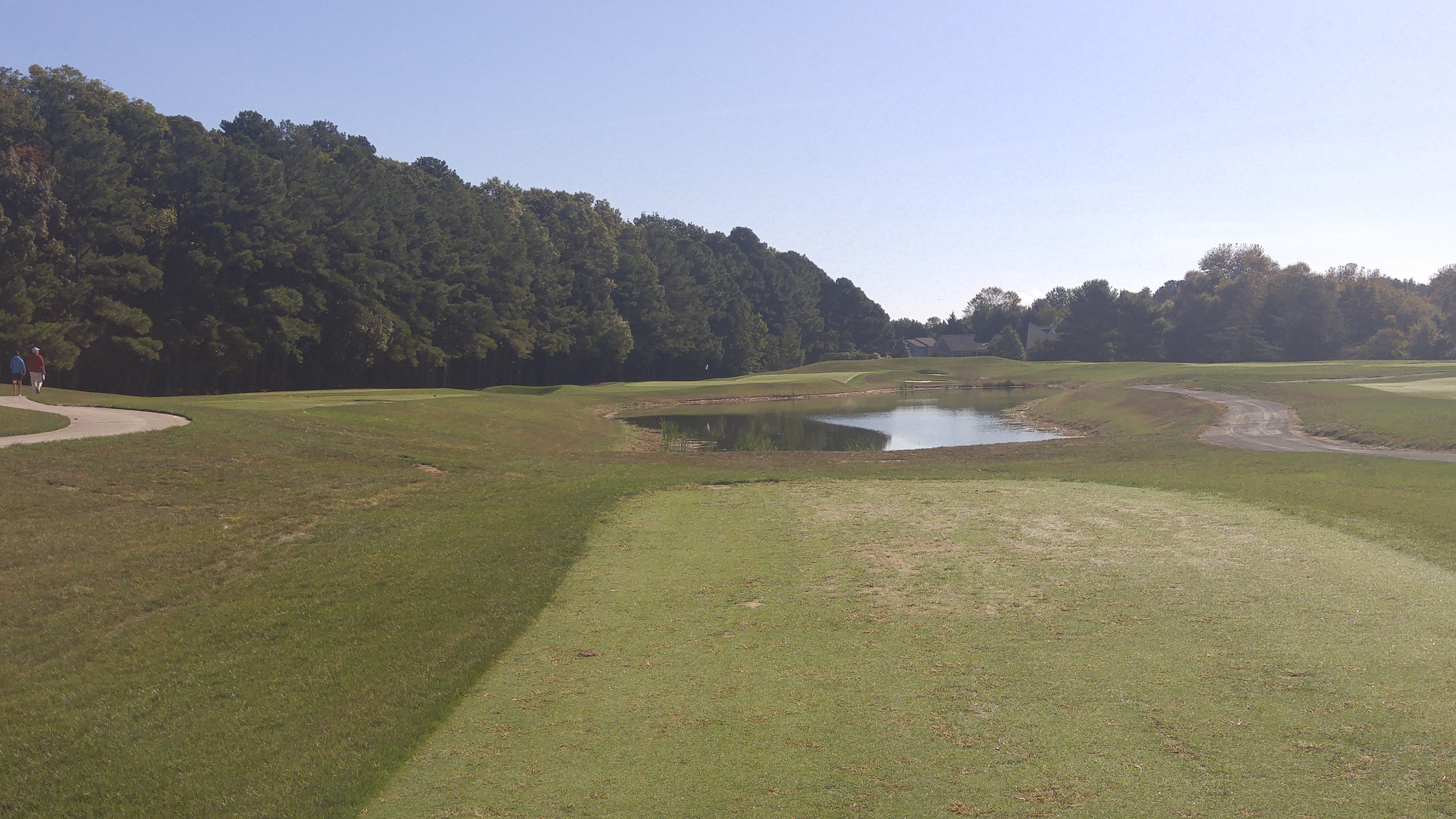
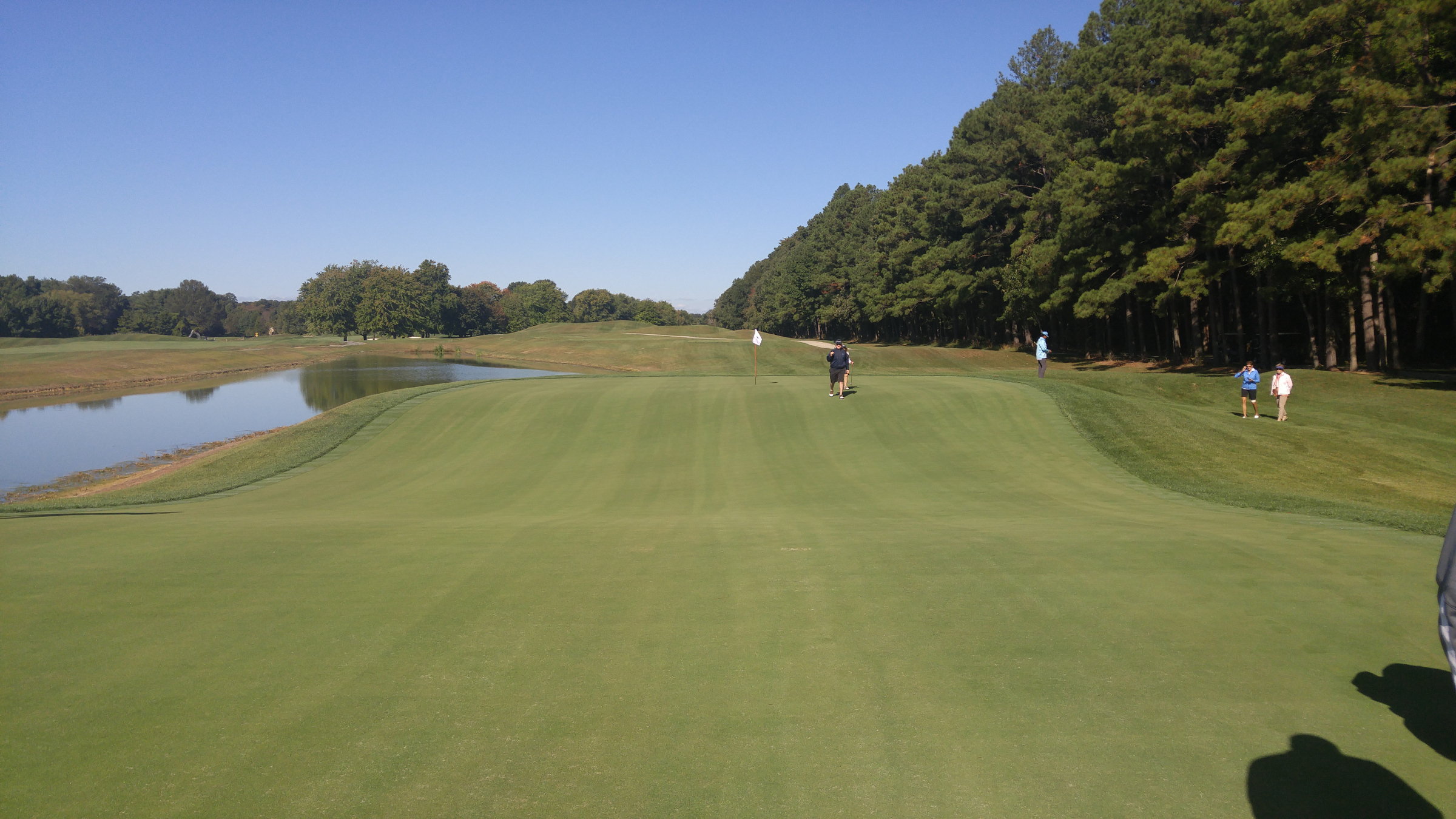
The 10th hole is a brilliant par 5, both in the tee shot and the approach. From the back tee, it's a tricky threading of the needle in between two large trees just in front of the right edge of the fairway and a bunker running up the left after a nearly 250-yard carry over a guarding hazard. That's tough enough, but if you get in a position to chase a second shot toward the green, the elevated, kidney bean-shaped surface isn't all that friendly to holding a ball. Most of those shots will land in a lower collection area underneath the surface, requiring a choice between a bump-and-run into the hill or a flop-style shot from a tight lie.
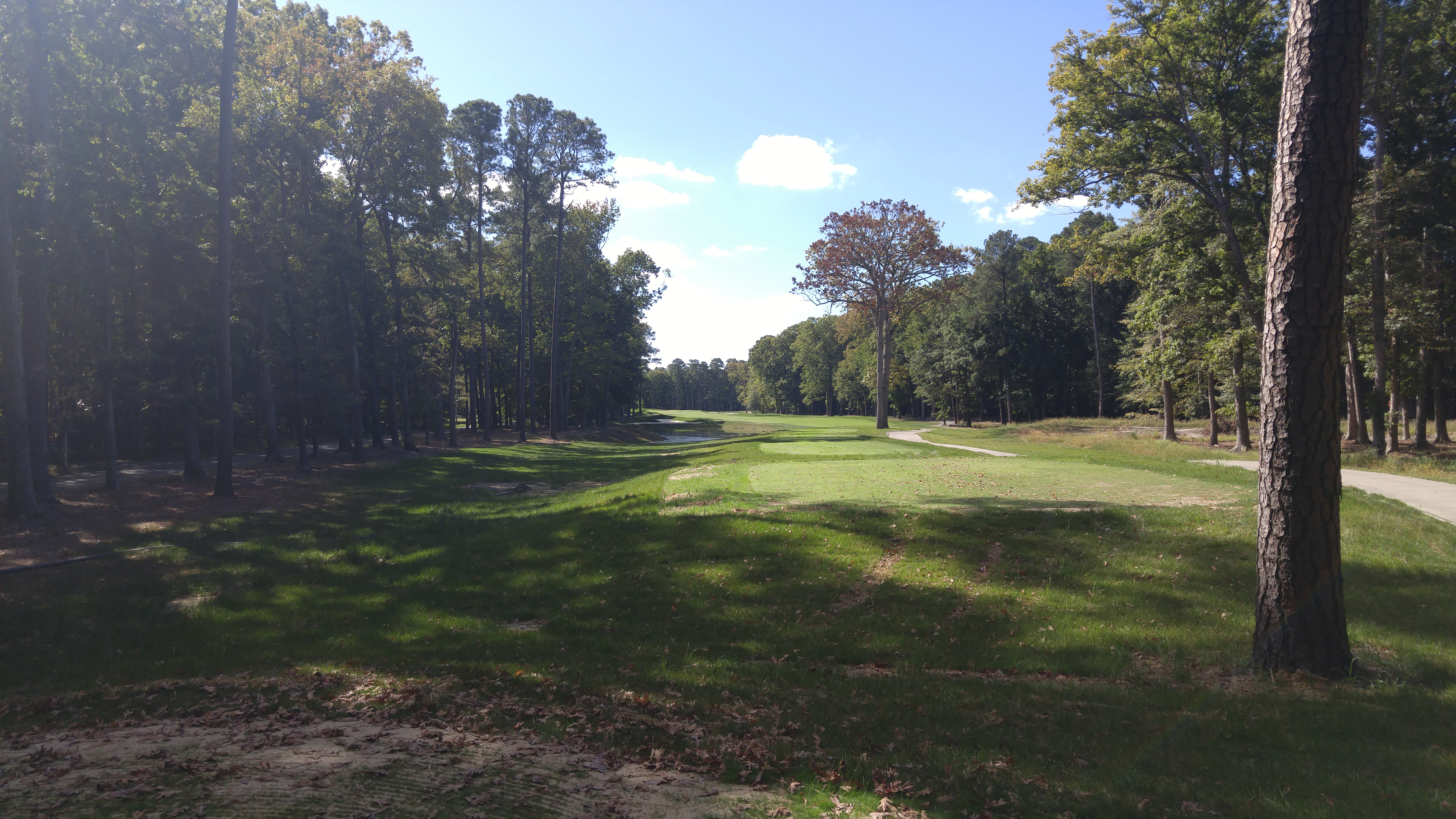
If there's one thing a Dye course will reveal in a golfer, it's their conviction to hit a shot.
That conviction is again tested off the tee on the par-4 14th. It feels impossible. From the box, all you can see is a small piece of green turf down the middle, forest to the left and a bunker-hazard combo on the right side that forms a dogleg of sorts. Are you supposed to hit a cut? A straight ball? And to what landing area? After three balls, I settled on liking the dumbest play available: a draw taking on the water and hazard as far as I could.
Like with most Dye courses, though, there's always more room than it appears. Maybe not much, but more. That's off the tee at least. The generally smaller greens on the Links at Perry Cabin will require a player to take on a lot of risk, even after a good tee shot from a longer player.
The closing stretch, which has been dubbed the Goodnight Kiss after a Dye quote on his philosophy concerning finishing holes, is a well-rounded ending.
The 16th is a shorter par 4 with a semi-blind tee shot if the player pulls driver, with a green largely fronting a perilous water hazard.
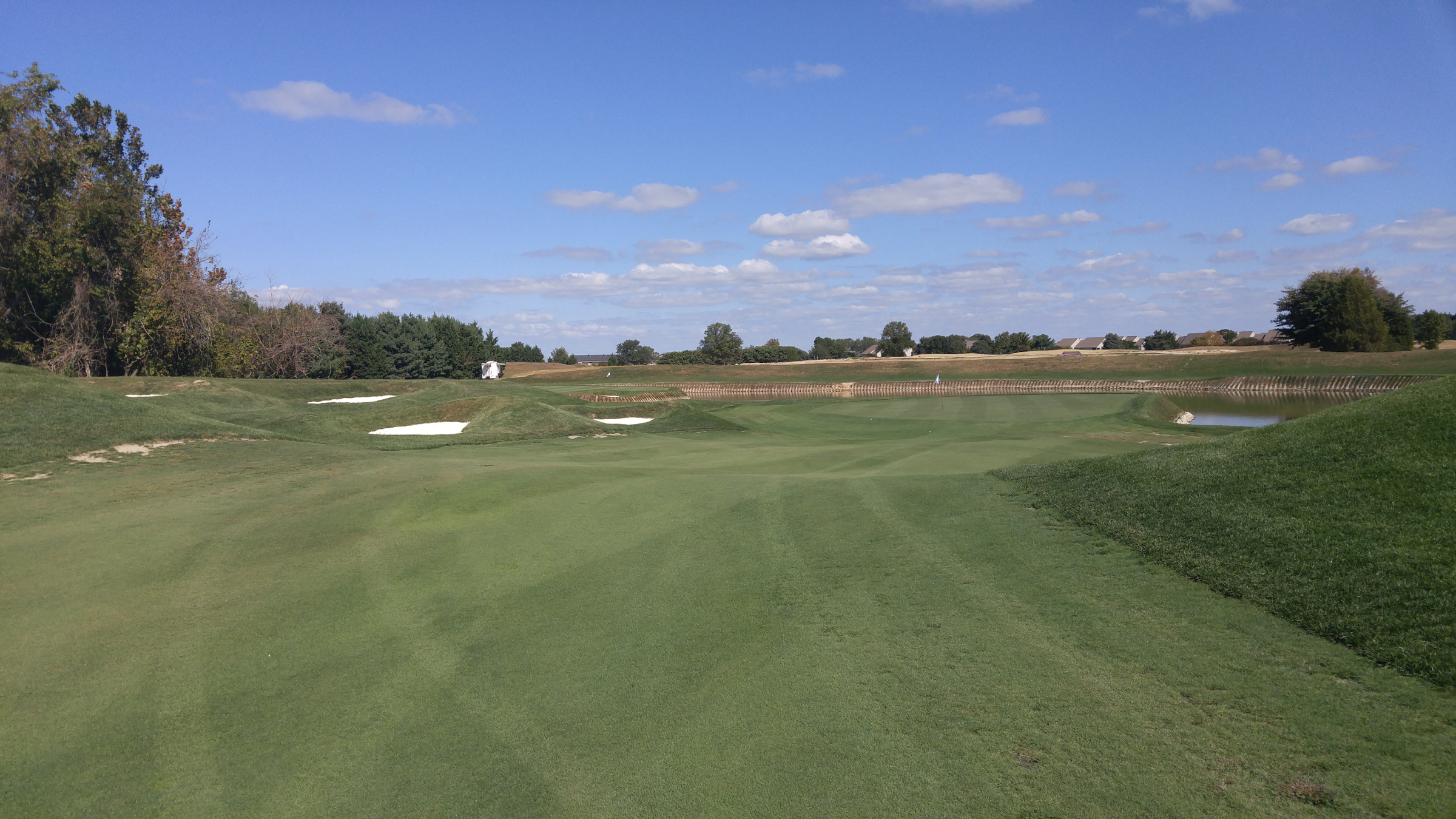
The 17th is a replica of the island green at The Players Stadium at TPC Sawgrass. The quiet of the setting adds to the unease of the shot, with players on the 16th green hypothetically able to see your pending doom.
We couldn't play the 18th hole, as it was still being worked. Frankly, it looked scarier filling in some of the details with my imagination. Playing into the wind, the 475-yard (from the back tee) hole has a pond with a pair of islands in it to discourage playing the hole outside of Dye's prescription. The fairway seems narrow, but that's more visual tricks than anything. From a likely sloped lie, players will be hitting into a two-tiered enormous green with a slew of perilous positions in the front portion near the water.
The facility will be world-class, with a full-size practice facility and the kinds of service touches that a member of multiple clubs would come to expect. It might be out of reach for the average player on a daily basis, but it will bring curious golfers to the incredible resort for a quiet weekend. That'll be good for the Eastern Shore, which is developing a broader economy.
That's in the not-too-distant future. For now, The Links at Perry Cabin is part finished (and maturing) product and part dust bowl. As pristine fairways grow in, workers are tirelessly laser-leveling tee boxes with the proper grading, laying drainage pipe and finishing bunkers and surrounds. It's easy to see how design can be intoxicating, going from imagining hundreds of possible routings on a tract of land to playing God by shaping earth in accordance with your whims to seeing those best laid plans come to life as a challenge for golfers.
For the Dyes, it had to be a uniquely awkward exercise of finding the best way to demolish something created lovingly in the family. While the designers aren't on a site on a daily basis, there is a compelling daily reminder for everyone of what Harbortowne once was.
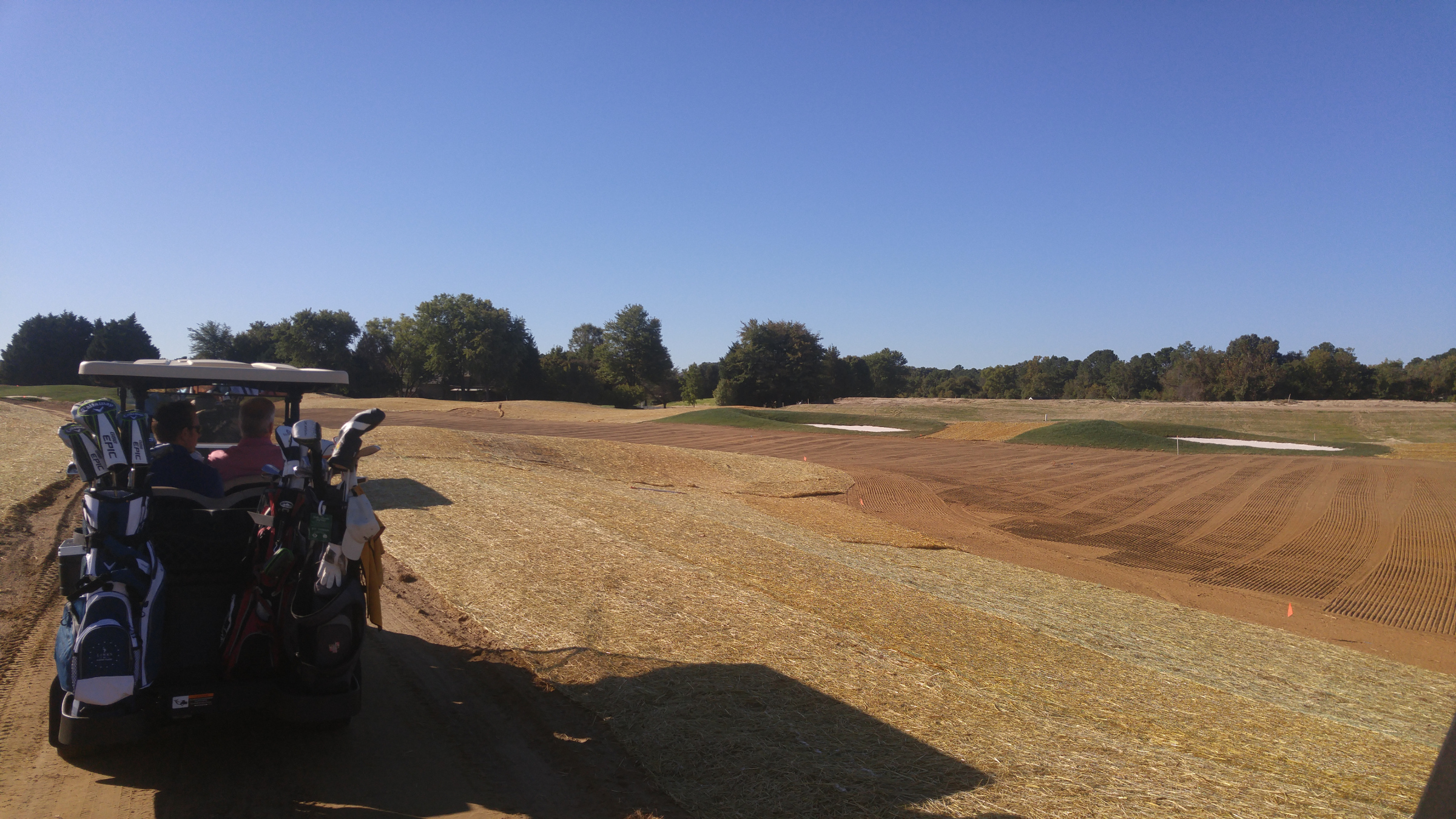
Driving around the in-progress holes, in between coughing fits, I spotted golf balls in all kinds of places. At first, the golfer in me was excited to see a ball, and I sort of wanted to hop out the cart and stash a few away for a shag bag or some junk balls for later. Then my inclination was to believe the staff is out there testing shots in real time by dropping these old balls everywhere. And then the truth dawns on me: These golf balls were lost, in the ground, from the decades of play on the erstwhile course. All of those balls you can't find but swear were right there? Maybe they actually were, and they eventually became part of the very course where you lost them.
At The Links at Perry Cabin, those balls will remain there a short while longer, as a reminder of what once was amid the work to replace it with better memories.

